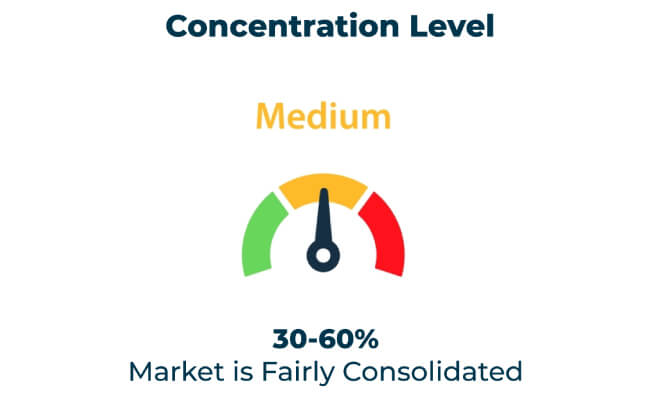The cosmetic polymer ingredients sector is witnessing rapid growth because of the manufacturers; innovative formulations aimed at fulfilling the changing requests from consumers for personal care and beauty products. The polymeric ingredients companies are the ones who get the most benefit from the advances in product properties and the wide range of applications in skincare, haircare, and makeup. The market will be driven to a growth at CAGR 6.8% during 2035 reaching to USD 13.6 billion. Growth through introduction of advanced and multifunctional polymer ingredients by leading companies like BASF, Dow, and Ashland will propel major growth in various applications.
| Attribute | Details |
|---|---|
| Projected Value by 2035 | USD 13.6 billion |
| CAGR during the period 2025 to 2035 | 6.8% |
Explore FMI!
Book a free demo
The cosmetic polymer ingredients market is expanding primarily as the beauty and personal care sectors are pushing their innovation and sustainability agenda. Polymers are the core of modern formulations, for they can change how a product looks, feels, and lasts and offer flexibility and scalability.
| Category | Industry Share (%) |
|---|---|
| Top 3 Companies (BASF, Dow, Ashland) | 30% |
| Rest of Top 5 (Clariant, Eastman Chemical) | 25% |
| Others | 45% |
Fairly Consolidated: Key players to sustain market share while next level and smaller players to target niche markets and geographic locations.

Sustainable Polymers: Companies start their research and development of biodegradable and bio-based polymers to achieve sustainability goals. Such polymers carry less environmental impact and appeal to the eco-conscious consumers.
Multifunctional Ingredients: With the production of materials that perform multiple jobs, such as emulsification, control of viscosity and water barrier, manufacturers will be able to simplify formulation hence surpass the performance of the product.
Nanotechnology Integration: Nanotechnology used in polymer ingredients provides better delivery of active ingredients and adhesion to the skin of the cosmetics.
Preference for Natural Ingredients: Buyers are more inclined to choose products that have only sustainable and plant-based polymers.
High-Efficiency Products Are in Demand: Long-lasting, water-resistant, and weightless formulations are the prime focus of end-users.
Focus on Skin and Hair Health: A major concern to consumers is the polymer ingredients that increase hydration, texture, and protection in personal care products.
North America: The guidelines by the FDA significantly influence the usage of safe and non-toxic polymers in personal care products.
Europe: The stringent regulatory mechanism under REACH has forced the adoption of environment-friendly and biodegradable polymer ingredients.
Asia-Pacific: Awareness of consumers and government programs advocating for sustainable manufacturing has led to the promotion of polymer ingredient adoption.
| Region | Market Share (%), 2025 |
|---|---|
| North America | 30% |
| Europe | 35% |
| Asia-Pacific | 25% |
| Rest of the World | 10% |
The main metrics include revenue growth, the introduction and adoption of environmentally friendly polymers, and the rate of product innovation. The statistics such as the penetration of the regional market and the technical advancements give insights into the sector's dynamics.
| Tier | Tier-1 |
|---|---|
| Market Share (%) | 30% |
| Examples | BASF, Dow, Ashland |
| Tier | Tier-2 |
|---|---|
| Market Share (%) | 25% |
| Examples | Clariant, Eastman Chemical |
| Tier | Tier-3 |
|---|---|
| Market Share (%) | 55% |
| Examples | Regional and niche players |
Recommendations for Suppliers
The cosmetic polymer ingredients market will evolve through sustainability, multifunctionality, and digital integration. Companies that aligniche with eco-conscious consumer trends and enter into R&D will be the market leaders. They will also benefit from collaborations with beauty brands and regional distributors which will lead to the rise of adoption and innovation.
Definitions
Polymer Ingredients: Currently or potentially used to alter or improve properties like texture, stability, and functionality in cosmetic formulations.
Multifunctional Polymers: A polymeric compound that has multiple benefits, like emulsification, film formation, and viscosity control.
The report employs both primary and secondary research. The primary data result from interviews with industry insiders while the secondary data is derived from market study reports, government publications, and company data.
The market is projected to grow at CAGR of 6.8% between 2025 and 2035
The Cosmetic Polymer Ingredients market is expected to reach USD 13.6 billion by 2035
Thriving personal care products industry to drive growth in the market.
Key players in the Cosmetic Polymer Ingredients market include BASF, Dow, and Ashland
Agricultural Fabrics Market Growth - Trends & Forecast 2025 to 2035
Asia Pacific Industrial Solvents Market Growth - Trends & Forecast 2025 to 2035
Asia Pacific Waterproofing Chemicals Market Growth - Trends & Forecast 2025 to 2035
Diamond Wire Market Size & Outlook 2025 to 2035
Thioesters Market Growth & Trends 2025 to 2035
The Self-Healing Materials Market is segmented by product, technology, and application from 2025 to 2035.

Thank you!
You will receive an email from our Business Development Manager. Please be sure to check your SPAM/JUNK folder too.